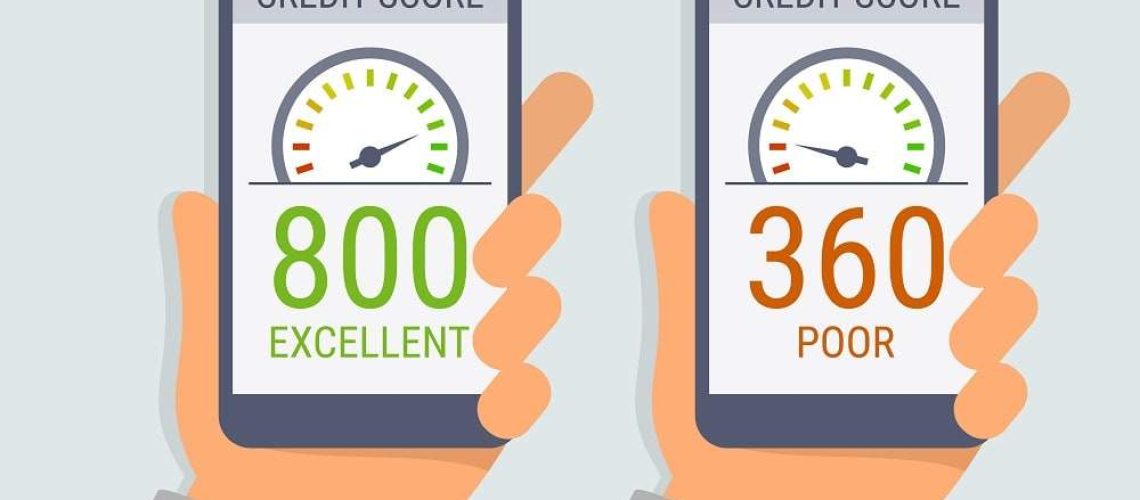Positive vs Negative Credit Score: What We Can Learn From Our Credit Scores
A higher score means you will pay on time, but you’ll pay late or never, when your score dips below the average—that’s how lenders see it. Perhaps you’ve read too many positive vs negative credit rating comparisons already and you understood why it’s so important for lenders. So, this time, we’ll give you fresh ideas on how you can turn your negative rating into a positive one based on your credit rating.
Understand Your Ideal Credit Score
The typical FICO (Experian) and Equifax (Veda) credit score ranges from 300 to 850. Lenders have varying opinions on what a good-enough credit score is. This is mostly because of the type of loan product, credit risk and the amount involved. Lenders also use several sources of information to evaluate your creditworthiness.
Let’s say, Ibiza decided to request for her credit score from two credit report providers, Experian and Equifax. The first provider gave her a 740 rating, while she only received a 620 score in Equifax.
While the two companies use the same scoring range, they have different scoring models.
FICO vs Vantage Score
FICO puts 35% weight on your Payment history, 30% percent on your total debts, 15% on the length of your credit history and 10% on your credit mix. The other 10% refers to your new credit, which includes credit inquiries.
Vantage Score 3.0 (designed by Equifax) includes your financial activity for the past 2 years. It also includes your recurring bills such as rent, water and utilities in the calculation of your score. The score ranges may also vary depending on the Vantage Score version the lender uses. The Payment history accounts for 40%. From this 21% is based on the age and type of your credit. Lastly, 20% is influenced by the utilization rate or the percent of your credit limit that you have used up. The total balances or debt you have accounts for 11% of your score, 5% on your recent credit inquiries and another 3% on your available credit.
In the given example, while both the FICO and Vantage Score 3.0 credit scoring formulas have similar credit score ranges, there’s a huge difference in the scores in terms of length of credit history, utilization rate and credit mix. Vantage Score places 45% on the utilization, that’s 15% higher than FICO’s 30%. On the other hand, Vantage Score only gives 21% to the length of your credit and your credit mix, while FICO gives a total of 25% to these 2 factors, that’s 4 points higher than Vantage Score 3.0.
In the example above, Ibiza received a very poor score from Vantage Score, but a very good score of 700 in FICO.
Compare Positive vs Negative Credit Rating based on its impact on your Finances
High-interest loans, limited access to loan products and risk of not getting a good job are just some of the few consequences of poor credit rating. Lenders usually frown upon application from borrowers with a score below 579. This is because of the presumption that they will default on their payments. Thus, they tend to increase the interest rates to make the loans profitable and offset the risk of not being paid back.
A negative credit rating indicates that you have a high credit risk. This indicates that you may have the tendency to miss payment or become delinquent on your loans. If your scores range from 580 to 669, you may still be labeled as fair. You may face high interest rates even though you are less risky compared to those with lower credit scores. With that, you may not be able to access the best loan products and the best loan terms. You are limited to high-interest mortgage rates and credit cards and personal loans for people with bad credit. Sometimes, you may not be able to open a new credit card account, unless it’s a secured card. Car owners with bad credit may have to pay higher insurance premiums. The interests and fees can be up to 4 times higher compared to credit account and loan rates offered to people with good or excellent credit.
Focus on your Problem Areas
If you missed payment several times these past 12 months, it’s time to re-consider your debt management strategy. Why are you missing payments? Is it because of some changes in your financial situation? Calculate your total debts. Is it beyond your capacity to repay each month? You can take actions based on your answers to the previous questions. Perhaps a consolidation loan or debt relief program can help. A new budgeting strategy that will allow you to spend less while working on your financial goals can also keep you on track.
Check your Credit
The most effective way to increase your credit score is to do your very own DIY Clean Credit Repair! Clear credit history by removing the negative listings in your credit record to improve the ratings of your payment history, update your payment records to decrease your total debts, and report those debts which do not belong to you. Repairing your credit can also give a boost to your credit history and credit mix. Make an enquiry today!

